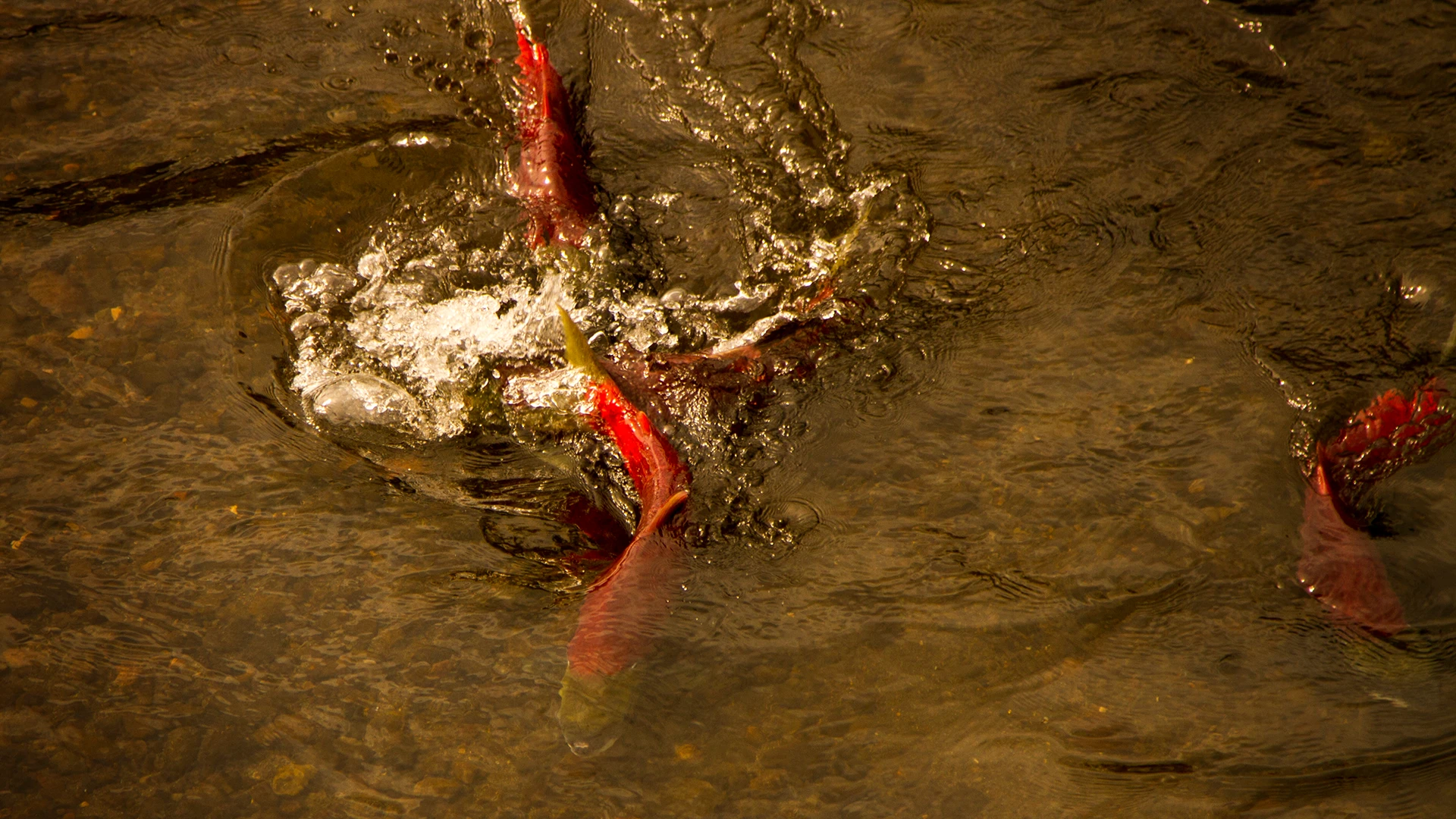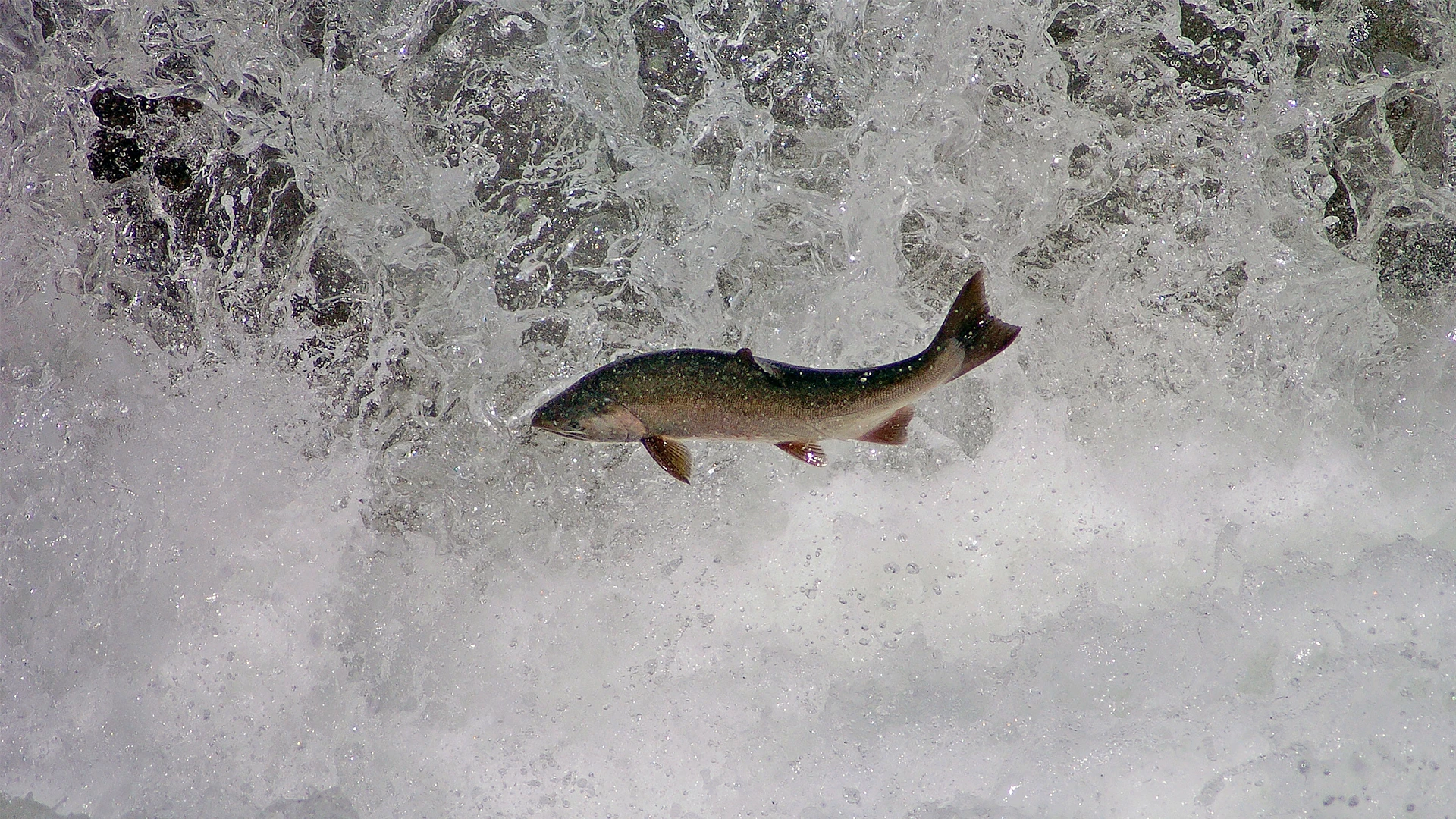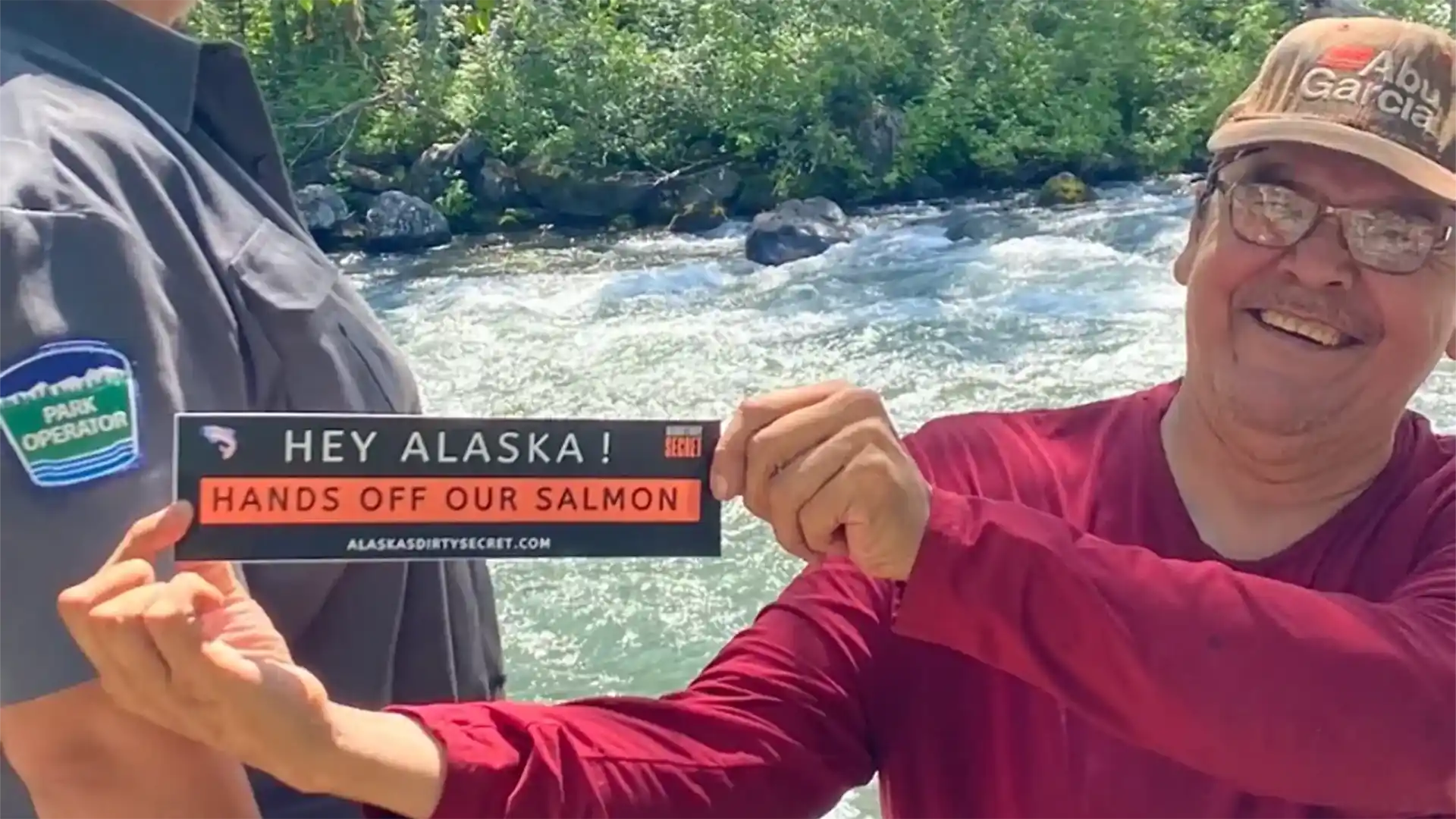Can You Swim the Skeena?
Swim the Skeena Challenge
Swim the equivalent of 570 km at the Terrace Aquatic Centre
The mighty Skeena River runs 570km from the Sacred Headwaters (Spatsizi Plateau) to the Skeena Estuary near Prince Rupert, passing various stunning and essential sites.
Join this year’s ‘Swim The Skeena Challenge,’ a joint partnership with SkeenaWild and the City of Terrace.
Swim the equivalent distance of the Skeena River at the Terrace Aquatic Centre as we take you on a journey to learn about the spots along the way.
The Skeena River
The Skeena River is one of the most important and diverse in the world and home to five species of Pacific salmon and steelhead. People from around the world flock to the banks of the Skeena River every season just for a glimpse of these elite athletes of natural engineering, travelling thousands of kilometres throughout the Pacific Ocean, only to swim back to where they came from, spawn and die. The Skeena is one of the last remaining wild salmon strongholds. That’s why at SkeenaWild, we have hope: because we’ve already seen great things emerge when salmon are put at the centre.
Photo Gallery Option




KM 0: The Sacred Headwaters
This vast region in northern British Columbia is the birthplace of three iconic salmon watersheds: the Skeena, Stikine, and Nass Rivers. Local Tahltan people call the area Klabona, which loosely translates as “headwaters.”
The Sacred Headwaters is an area of cultural and ecological significance. But the region is also rich in mineral and energy resources, including coal and coalbed methane. Several industrial development projects were proposed for the area, such as Fortune Minerals’ open-pit Klappan Coal Mine and Royal Dutch Shell’s Klappan Coalbed Methane Project.
Between 2004 and 2009, Shell Canada proposed to develop thousands of wells to extract up to as much as 8.1 trillion cubic feet (230 km3) of coalbed methane gas.
These projects would have threatened the water supply and destroyed sacred cultural sites. Due to these threats and other community concerns, resource development in the Sacred Headwaters was halted. However, this victory was not without its challenges; a group of Tahltan elders and leaders were arrested for blocking the road leading to the proposed mine site. The arrests sparked a decades-long movement that eventually protected the area.
In 2019, The B.C. government and Tahltan Nation signed the historical Klappan land-use plan that advances reconciliation and embraces the Klappan Valley’s significant social, cultural, environmental, and economic values.
Collective community efforts helped safeguard vital salmon habitats and ensure the area’s cultural heritage is preserved for future generations.
The Upper Skeena
This part of the Skeena Watershed provides an important refuge for wildlife, hosts critical salmon habitat, and is largely untouched- despite some forestry, mining, and energy interest in the area.
The vast wilderness of the Upper Skeena Watershed presents a unique opportunity for achieving innovative conservation outcomes through Indigenous-led Land Use Planning. Examples of Indigenous-led land use plans in the region use enhanced land management standards that protect biological and ecological diversity, climate, and culture and consider future generations. These plans operationalize reconciliation and provide a clear path forward for how, when, and where development can occur to both minimize impacts and conflict.
Given that it is more cost-effective to protect intact forests rather than rebuild what has been lost, the vast wilderness of the Upper Skeena also presents exciting opportunities for carbon offset projects. These projects can play a crucial role in securing long-term protection of the area, helping the climate, and offering sustainable non-timber economic opportunities for local communities.
KM 337: Babine Confluence
The Babine watershed is a world-renowned system, marked by its rich ecology and cultural importance to the Indigenous communities who call Babine home. The Babine hosts a globally significant steelhead run and the Skeena’s largest population of Sockeye salmon, making it a critical part of the fishing and tourism industries. The Babine system supports important populations of moose, mountain goats and grizzly bears. Development pressures within the Babine watershed are growing as forestry cutting permits are issued to multiple large-scale licensees, and a pipeline corridor is proposed north of the Babine River. Watersheds like the Babine play a crucial role in climate regulation, carbon sequestration, and water management. Protecting systems like the Babine helps mitigate the impacts of climate change and ensure water availability for future generations.
KM 440: Witset
The Wetzin’kwa (Bulkley-Morice) is home to the Skeena watershed’s largest chinook salmon population and hosts sockeye, coho and steelhead. Witset (Moricetown) Canyon is renowned for its dramatic landscape and an important traditional Wet’suwet’en selective dipnet fishing site. The Wet’suwet’en also uses the Witset Canyon site to collect information on salmon returns and health, supporting essential conservation efforts in response to the diminishing returns of salmon returning to their territory due to climate change and worsened by land-use activities such as logging, mining, and agriculture. However, further upstream from the Witset Canyon, there is hope for salmon. While climate warming has negatively affected previously productive salmon systems, melting glaciers in the Upper Wetzin’kwa may create new suitable salmon habitats in the future.
Skeena & Bulkely Confluence
The confluence of the Bulkley and Skeena Rivers, located near the ancient village of Gitanmaax and present-day Hazelton, has long been an important meeting place for both Indigenous and non-Indigenous communities.
For millennia, this area has served as a vital fishing site and transportation hub for the Gitxsan people. The Village of Hazelton, often referred to as “Old Town,” has maintained its character since its founding in 1866. It has historically served as the central navigation hub of the region, evolving from a point along ancient trails to a location facilitating travel by canoes, pack trains, and dog sleds. Eventually becoming a stop for paddle-wheelers from the Northwest Coast.
Today, this area is not only a cultural treasure but also essential for salmon conservation. It supports all five species of Pacific salmon as well as steelhead trout, both of which are crucial for the health and sustainability of our communities that depend on these two significant rivers.
How To Join The Challenge
Location: Terrace Aquatic Center, 4540 Park Avenue, Terrace, BC, V8G 2N1.
- Sign up for the challenge at the pool (either as an individual or as part of a team) beginning March 18. Registration is open all year-round.
- A one-time donation (minimum $5) to SkeenaWild Conservation Trust is required plus a pool entry fee or pass is required. Paid at the pool.
- Swim in your own time and record your distances using the materials provided.
- As you hit milestones, you will learn about the importance of the areas.
- At the end of 2024, see how far down you swam, if the whole distance!
- Chance to win prizes for all involved.
Milestones – Every 100 kms
Make sure to let the pool staff know once you’ve hit a milestone so you can be entered into a prize draw.
- 1 lane = 25 m
- 40 lanes = 1 km
- Skeena River = 570 kms
Lane Swim Hours
- Monday to Friday:
6:00 am to 9:00 am (Passholders only)
11:30 am to 1 pm - Monday, Wednesday and Friday:
8:00 to 9:00 am - Saturday:
Noon to 1 pm - Sunday:
11:00 am to 1 pm
Stand Alone Full Width Image Option





Heading Text – 60/40 Option
Subheading Text
Lorem ipsum dolor sit amet, consectetur adipiscing elit, sed do eiusmod tempor incididunt ut labore et dolore magna aliqua. Ut enim ad minim veniam, quis nostrud exercitation ullamco laboris nisi ut aliquip ex ea commodo consequat. Duis aute irure dolor in reprehenderit in voluptate velit esse cillum dolore eu fugiat nulla pariatur. Excepteur sint occaecat cupidatat non proident, sunt in culpa qui officia deserunt mollit anim id est laborum.
CTA Option – Take Action Link
Subheading Text
CTA Option – Link to Program
Subheading Text
CTA Option – Take Action Link #1
Subheading Text
CTA Option – Take Action Link #2
Subheading Text
CTA Option – Take Action Link #3
Subheading Text
CTA Option – Take Action Link #4
Subheading Text
Other News

Legal Challenge Filed Against Decision Allowing KSM Mine to Proceed
KSM Gold Mine Judicial Review Legal Challenge Filed Against Decision Allowing KSM Mine to Proceed The proposed mine threatens Nass and Unuk watersheds, relies on…

Alaska salmon fishery objection dismissal ‘seriously undermines’ MSC credibility
Alaska salmon fishery objection dismissal ‘seriously undermines’ MSC credibility Watershed Watch, Raincoast Conservation and SkeenaWild’s objection to SE Alaskan fisheries’ sustainable rating was rejected this…

B.C. NGOs head to Seattle for final step in their objection to the certification of southeast Alaska salmon fisheries
B.C. NGOs head to Seattle for final step in their objection to the certification of southeast Alaska salmon fisheries Alaska’s fisheries should not be accredited…

The Future Is Selective
The Future Is Selective This summer, B.C. salmon fishing has offered a glimpse into a sustainable future. In the Skeena, fisheries have opened with strong…

Legal Challenge Filed Against Decision Allowing KSM Mine to Proceed
KSM Gold Mine Judicial Review Legal Challenge Filed Against Decision Allowing KSM Mine to Proceed The proposed mine threatens Nass and Unuk watersheds, relies on…

Alaska salmon fishery objection dismissal ‘seriously undermines’ MSC credibility
Alaska salmon fishery objection dismissal ‘seriously undermines’ MSC credibility Watershed Watch, Raincoast Conservation and SkeenaWild’s objection to SE Alaskan fisheries’ sustainable rating was rejected this…

B.C. NGOs head to Seattle for final step in their objection to the certification of southeast Alaska salmon fisheries
B.C. NGOs head to Seattle for final step in their objection to the certification of southeast Alaska salmon fisheries Alaska’s fisheries should not be accredited…

The Future Is Selective
The Future Is Selective This summer, B.C. salmon fishing has offered a glimpse into a sustainable future. In the Skeena, fisheries have opened with strong…
Can You Swim the Skeena?
The mighty Skeena River runs 570km from the Sacred Headwaters (Spatsizi Plateau) to the Skeena Estuary near Prince Rupert passing various stunning and essential sites.
Join this year’s ‘Swim The Skeena Challenge,’ a joint partnership with SkeenaWild and the City of Terrace.
Swim the equivalent distance of the Skeena River at the Terrace Aquatic Centre as we take you on a journey to learn about the spots along the way.
The Skeena River
The Skeena River is one of the most important and diverse in the world and home to five species of Pacific salmon and steelhead. People from around the world flock to the banks of the Skeena River every season just for a glimpse of these elite athletes of natural engineering, travelling thousands of kilometres throughout the Pacific Ocean, only to swim back to where they came from, spawn and die. The Skeena is one of the last remaining wild salmon strongholds. That’s why at SkeenaWild, we have hope: because we’ve already seen great things emerge when salmon are put at the centre.
The Sacred Headwaters:
This vast region in northern British Columbia is the birthplace of three iconic salmon watersheds: the Skeena, Stikine, and Nass Rivers. Local Tahltan people call the area Klabona, which loosely translates as “headwaters.”
The Sacred Headwaters is an area of cultural and ecological significance. But the region is also rich in mineral and energy resources, including coal and coalbed methane. Several industrial development projects were proposed for the area, such as Fortune Minerals’ open-pit Klappan Coal Mine and Royal Dutch Shell’s Klappan Coalbed Methane Project.
Between 2004 and 2009, Shell Canada proposed to develop thousands of wells to extract up to as much as 8.1 trillion cubic feet (230 km3) of coalbed methane gas.
These projects would have threatened the water supply and destroyed sacred cultural sites. Due to these threats and other community concerns, resource development in the Sacred Headwaters was halted. However, this victory was not without its challenges; a group of Tahltan elders and leaders were arrested for blocking the road leading to the proposed mine site. The arrests sparked a decades-long movement that eventually protected the area.
In 2019, The B.C. government and Tahltan Nation signed the historical Klappan land-use plan that advances reconciliation and embraces the Klappan Valley’s significant social, cultural, environmental, and economic values.
Collective community efforts helped safeguard vital salmon habitats and ensure the area’s cultural heritage is preserved for future generations.
How To Join The Challenge
- Sign up for the challenge at the pool (either as an individual or as part of a team) beginning March 18. Registration is open all year-round.
- A one-time donation (minimum $5) to SkeenaWild Conservation Trust is required plus a pool entry fee or pass is required. Paid at the pool.
- Swim in your own time and record your distances using the materials provided.
- As you hit milestones, you will learn about the importance of the areas.
- At the end of 2024, see how far down you swam, if the whole distance!
- Chance to win prizes for all involved.
Location: Terrace Aquatic Center, 4540 Park Avenue, Terrace, BC, V8G 2N1.
Milestones – Every 100 kms
Make sure to let the pool staff know once you’ve hit a milestone so you can be entered into a prize draw.
- 1 lane = 25 m
- 40 lanes = 1 km
- Skeena River = 570 kms
Lane Swim Hours
- Monday to Friday:
6:00 am to 9:00 am (Passholders only)
11:30 am to 1 pm - Monday, Wednesday and Friday:
8:00 to 9:00 am - Saturday:
Noon to 1 pm - Sunday:
11:00 am to 1 pm
How Far Can You Swim?

Learn more about SkeenaWild